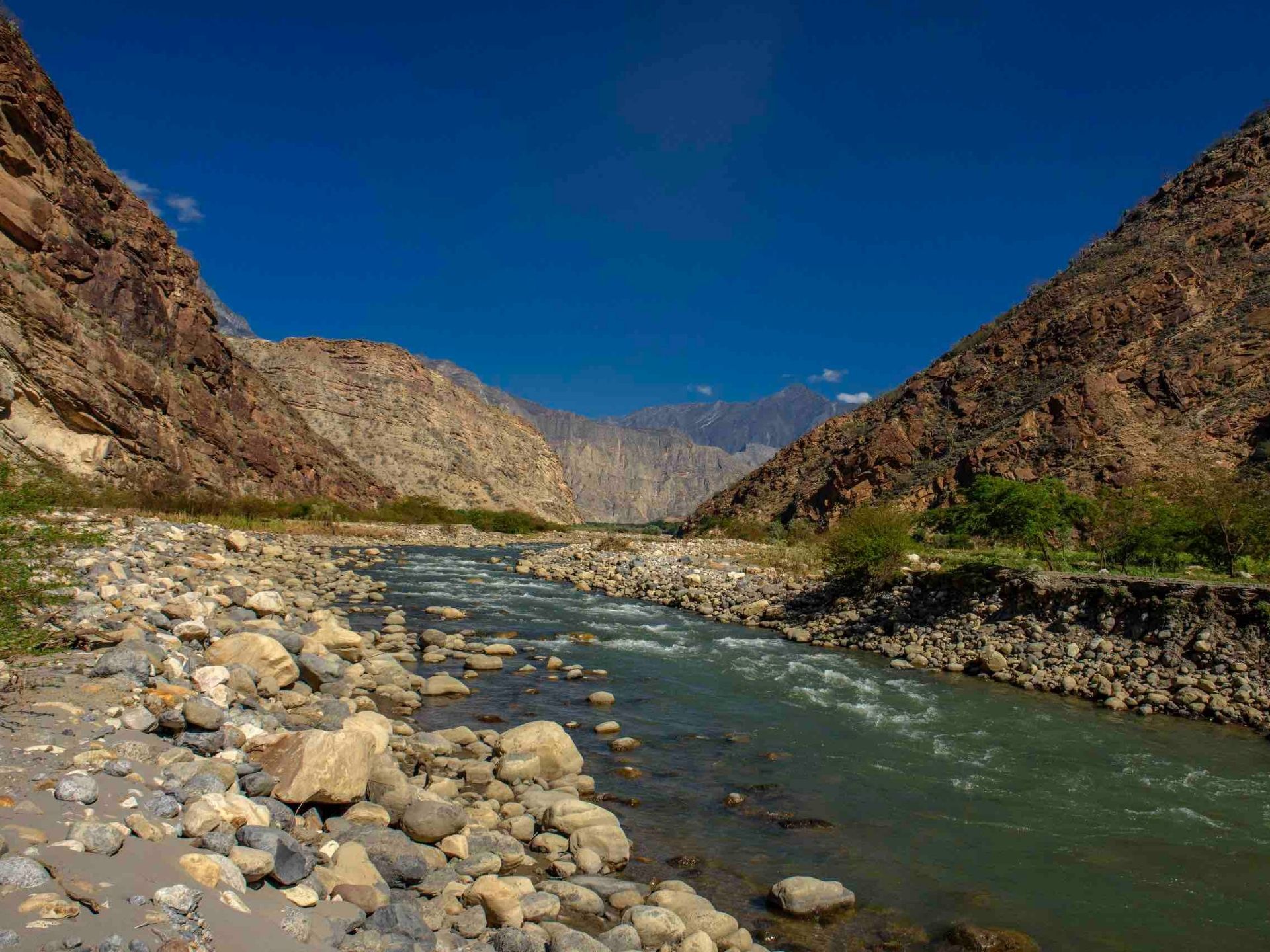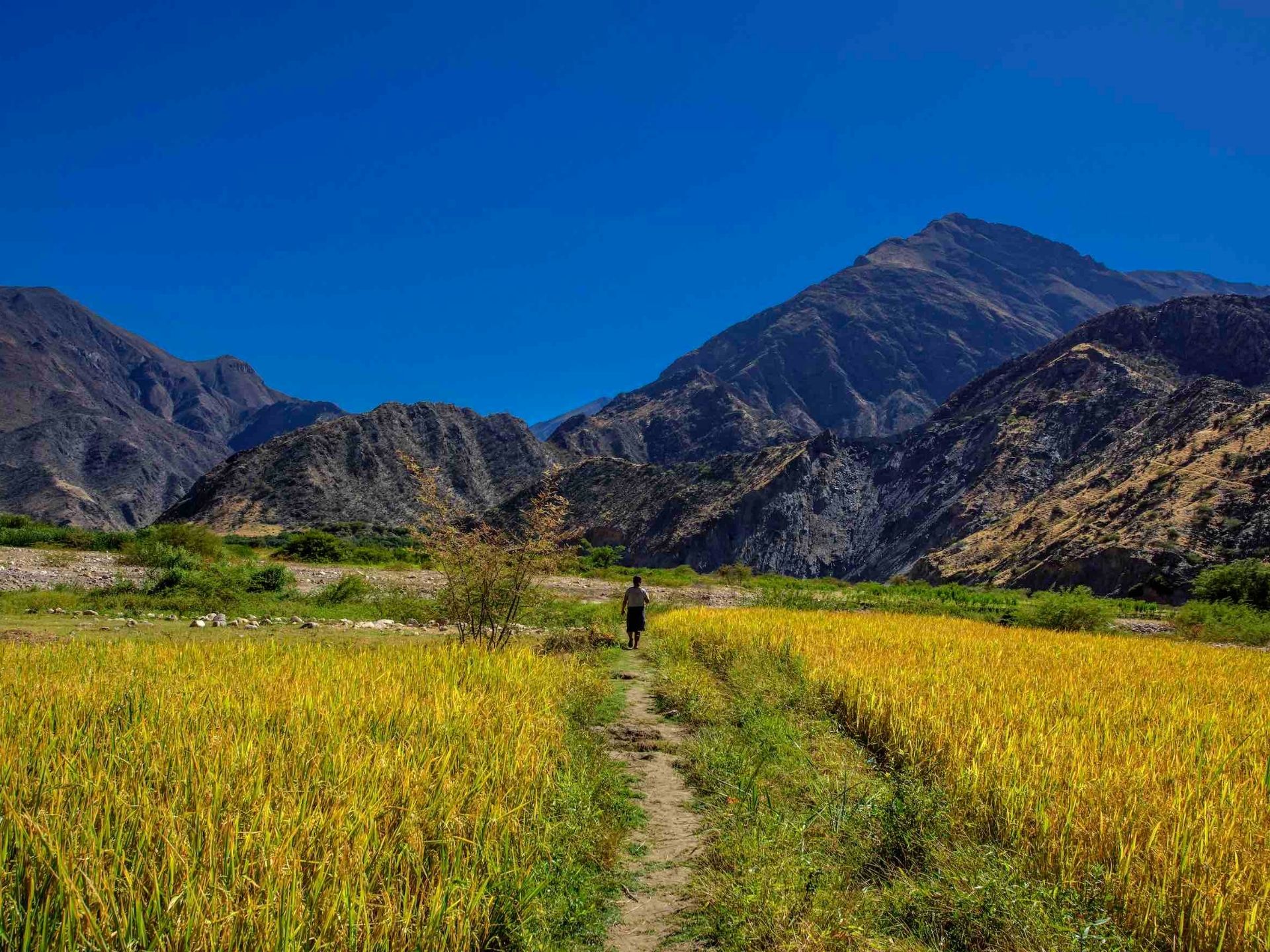A New Conservation Area in South America’s “Grand Canyon”
05/14/2021
Strategic Area:
Wild Places -
Content Type: News
Country:
Ecuador -
Peru’s new Regional Conservation Area “Bosques Secos del Marañón” protects rare dry forests in one of the most biodiverse places on Earth.
Nature and Culture International celebrates the declaration of a new conservation area in one of Peru’s most special yet threatened ecosystems. The newly established Bosques Secos del Marañón Regional Conservation Area (or Dry Forests of the Marañon RCA) protects 53,855 acres of tropical dry forest along the Marañon River in Cajamarca, Peru. The deep and rugged canyon, known as the Grand Canyon of South America, is recognized as one of the most biologically diverse areas within the Tropical Andes Hotspot.
Nestled between Andean peaks, the Dry Forests of the Marañon RCA boasts a unique microclimate and landscape. The Andes mountains act as a barrier, preventing humid air from the Amazon from reaching the Marañon. The conditions in the region have allowed unique species to adapt and evolve along the canyon and mountain slopes.
The Dry Forests of the Marañon RCA contains one of the highest rates of endemism of plant and animal species in Peru. Endemic species, or species found in only one location on the planet, are essential to an ecosystem. These rare species have developed unique characteristics to survive and also support a critical web of interactions in their surrounding environment. Unfortunately, endemic species are vulnerable to extinction due to their limited geographic range and usually small population size. Because they often only exist in a single region or even a single site, a sudden catastrophic event (for example, a forest fire) can drive an entire species to extinction.
Initial biological inventories reveal that the Dry Forests of the Marañon RCA is home to at least 65 species of plants of which half are endemic to the Marañon River Valley, 55 species of birds of which nine are endemic to the area, and five species of mammals. Unique and threatened species include the yellow-faced parrotlet (Forpus xanthops), the chestnut-backed thornbird (Phacellodomus dorsalis), and the endemic Marañon Ameiva lizard (Ameiva aggerecusans). Additionally, the area contains one of the last remnants of endangered Palo Verde (Parkinsonia peruviana) forests. We are hopeful that further biological evaluations will identify even more special species!
The area’s plant diversity helps maintain biological equilibrium in the Marañon, reducing soil erosion and regulating the region’s climate. The Marañon River and its tributaries, the Crisnejas and Miriles Rivers, provide water for agriculture in the region, ensuring food security.

The Dry Forests of the Marañon RCA is part of the Tropical Andes biodiversity hotspot, meaning that it is one of the most biodiverse places on Earth. However, it is also one of the most threatened. The area is increasingly threatened by unsustainable farming and cattle ranching in the area.
“My parents and grandparents always took care of the birds and plants of the Marañon, but some people would destroy the forest. I don’t want that to happen. I want this special place to be preserved,” says José Medrano, born and raised in a community near the dry forest.
Now that the Dry Forests of the Marañon RCA is established, the local government of Cajamarca will promote sustainable production activities to protect the area’s rich biodiversity. Additionally, the area has great potential to boost local economies through tourism. The Marañon is the perfect place for birdwatchers to find rare species, for explorers to walk among unique plants, and for adventurers to trek down the river. An increase in tourism will benefit local communities by creating jobs, encouraging sustainable development, and providing additional economic opportunities.
Jose dreams of promoting ecotourism in the Marañon to show the world this unique and incredible canyon.

The Dry Forests of the Marañon RCA is a result of seven years of collaboration between Nature and Culture, the Regional Government of Cajamarca, local communities and authorities, and the Peruvian Service for Natural Protected Areas. Our local team played a leading role in the creation process, supporting local leaders, working on the area’s zoning, and providing legal, technical, and logistical support. The area was established thanks to financial support from the Andes Amazon Fund and generous donors like you.
With your help, Nature and Culture will continue to work with the Regional Government of Cajamarca to develop the area’s Management Plan and train local communities on sustainable resource management and conservation. We will also partner with local universities to conduct additional research on the unique plants and animals found in the area.
Thank you for making this achievement possible! We hope that this bit of good news inspires you to continue fighting for nature and culture.
Did you hear about the new conservation area in the Peruvian Andes? Read about Páramos y Bosques Montanos de Jaén y Tabaconas Regional Conservation Area here.




